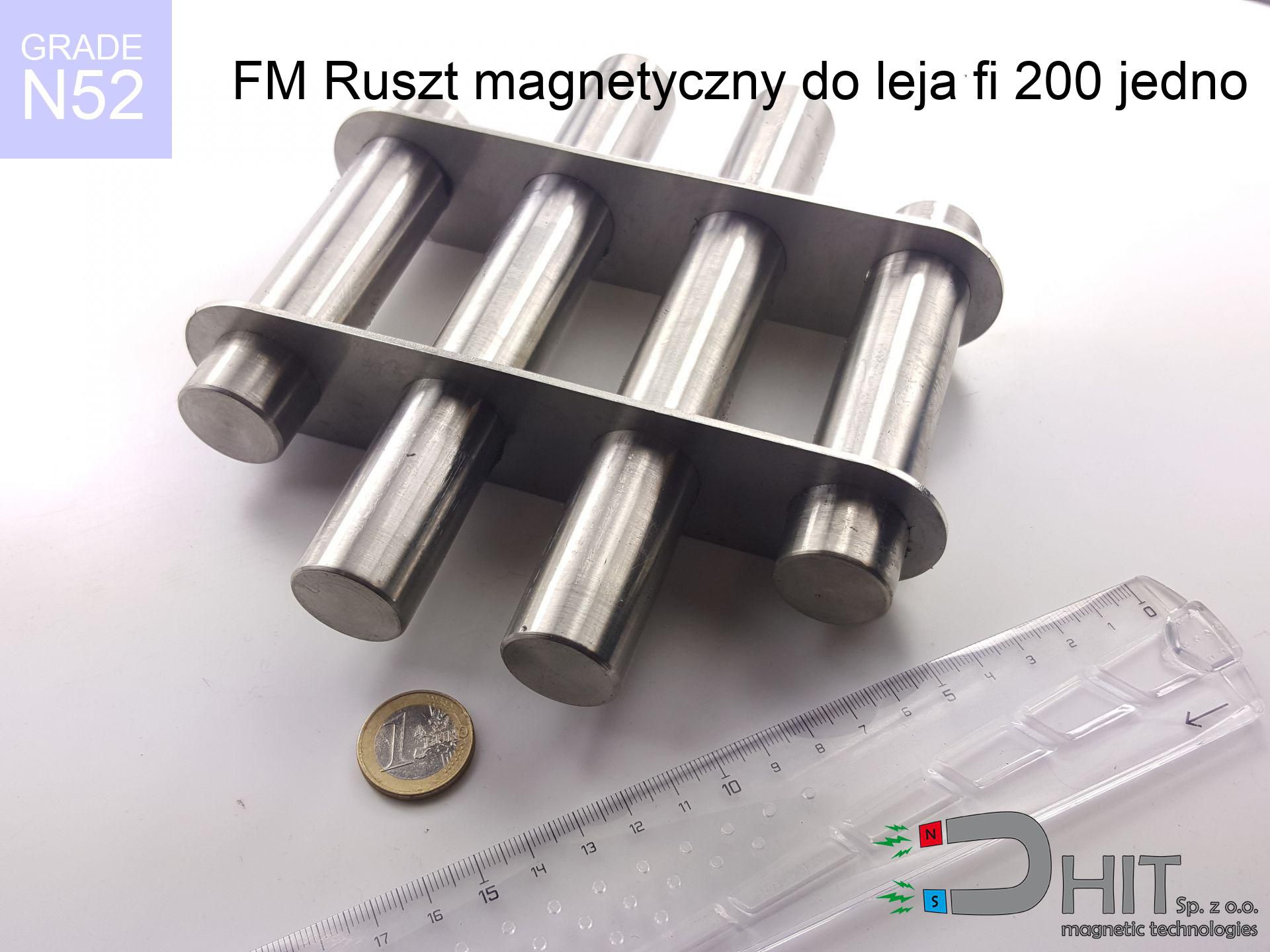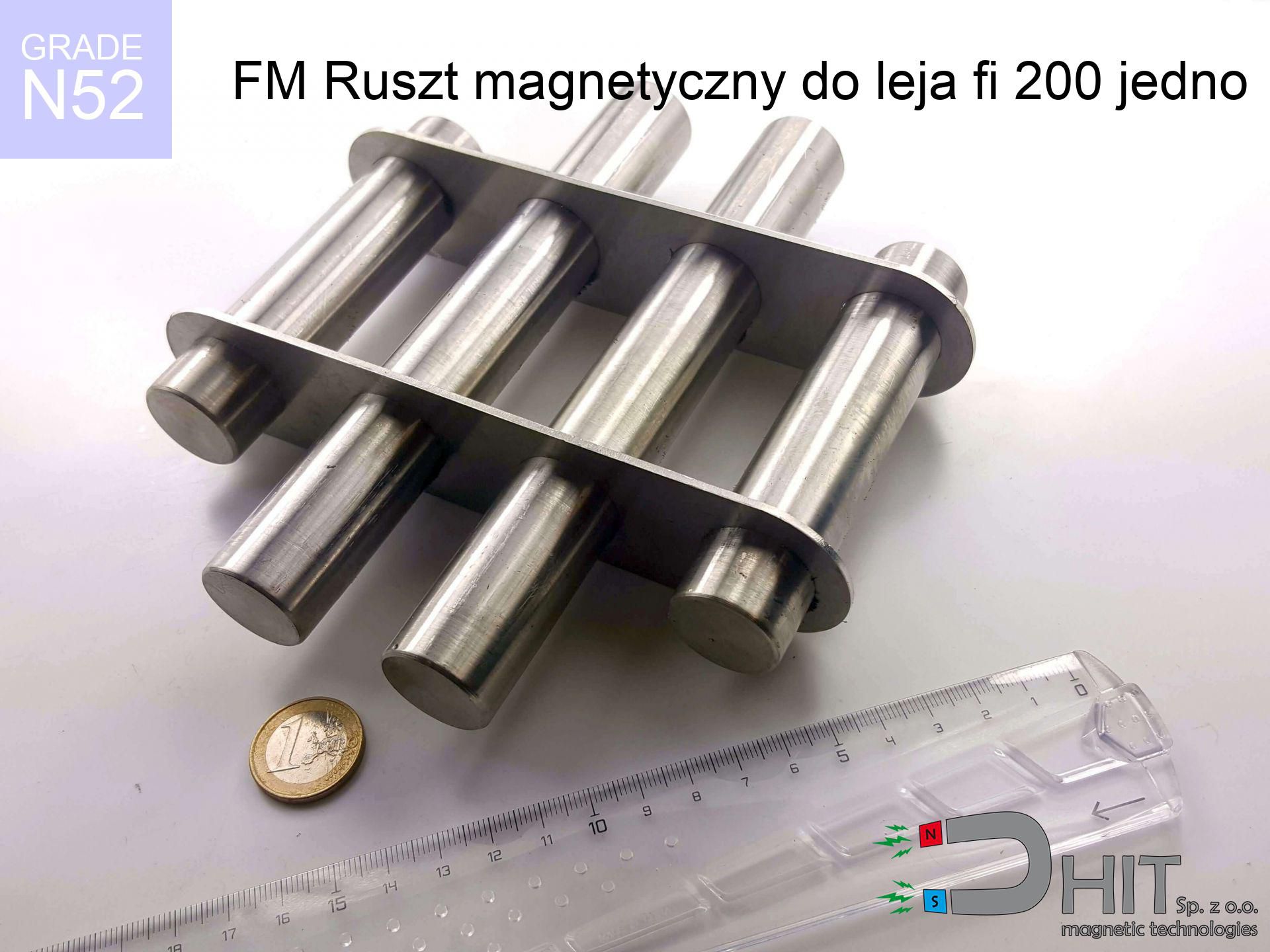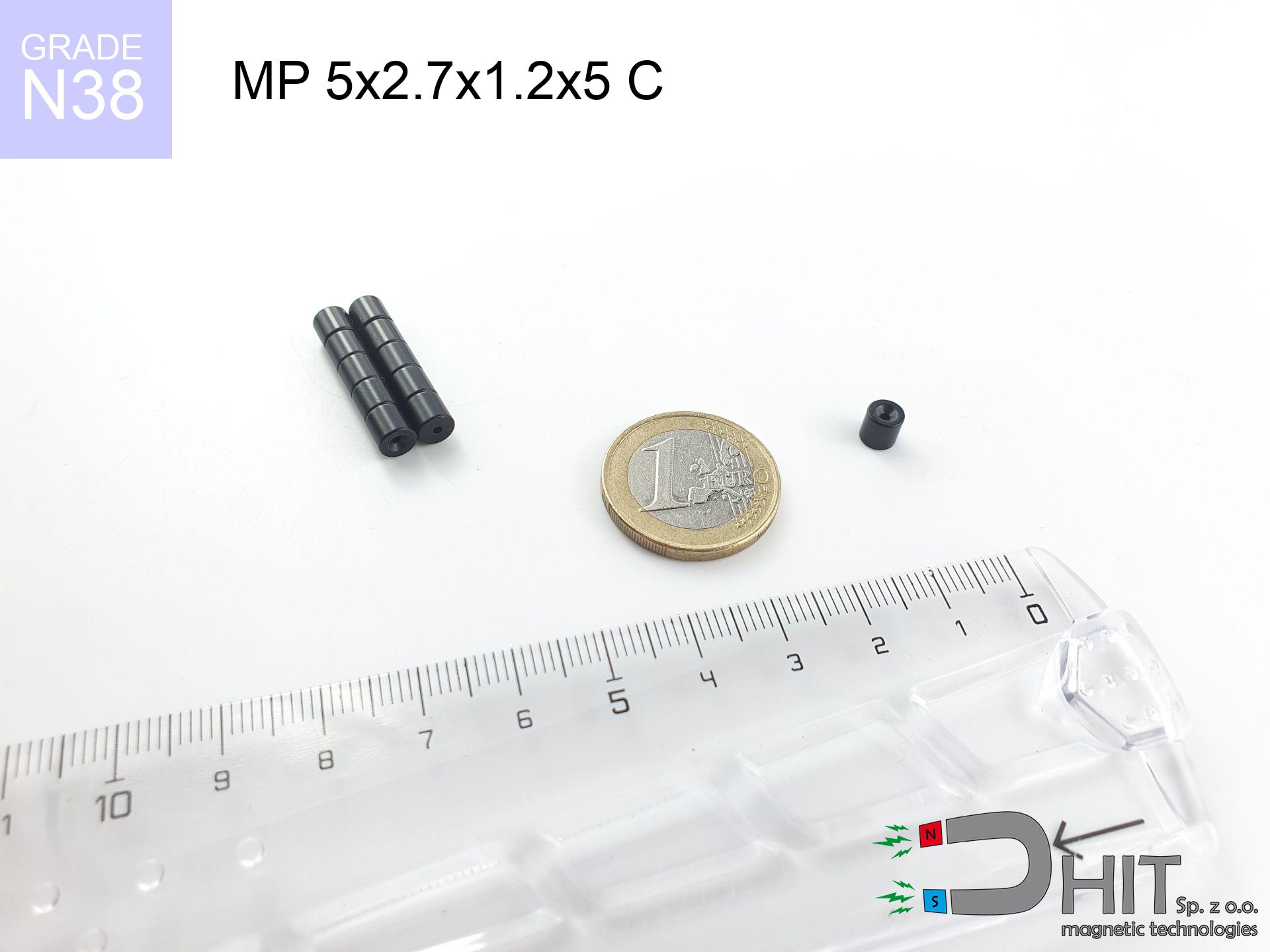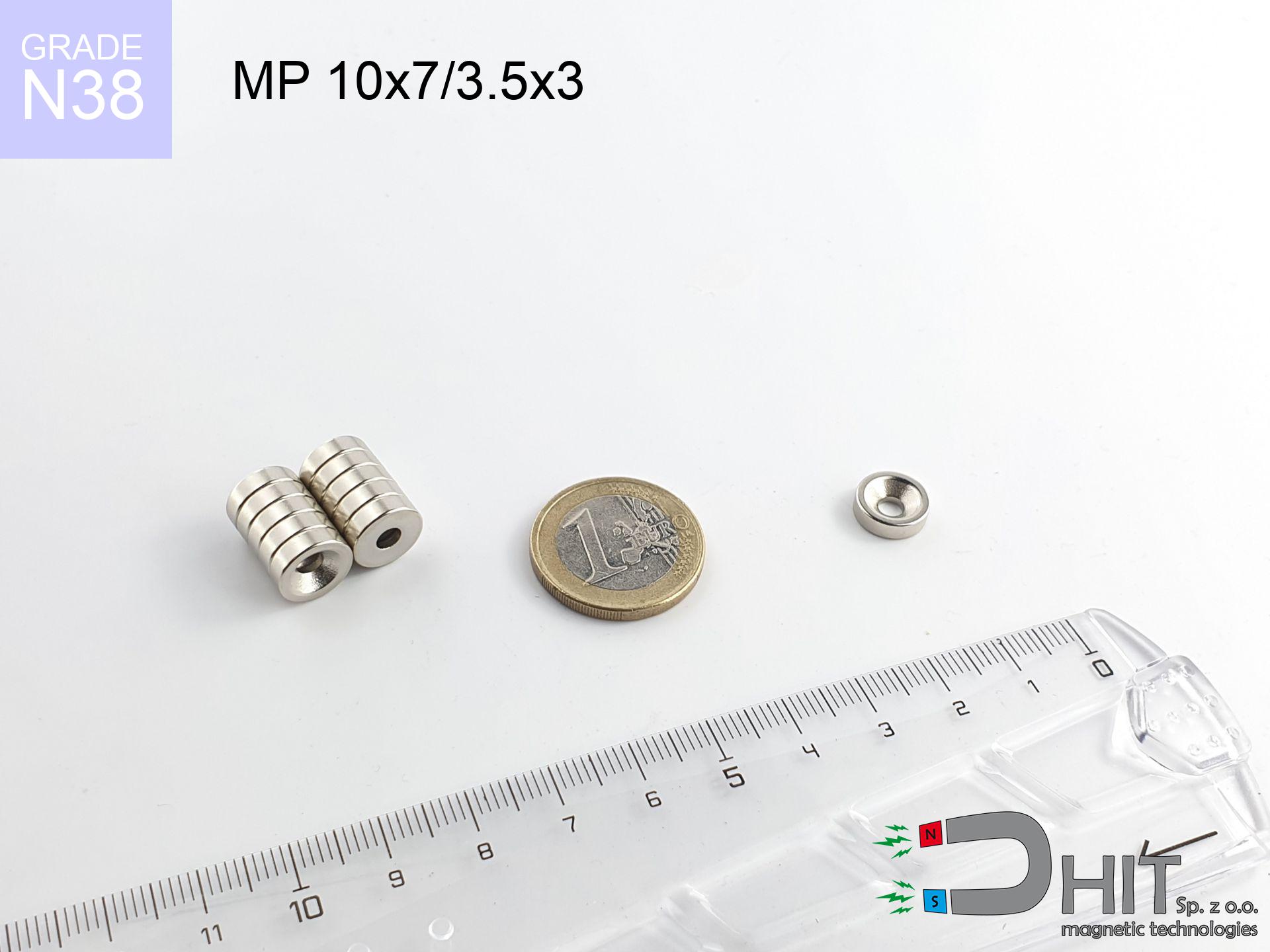FM Ruszt magnetyczny do leja fi 200 jednopoziomowy / N52 - magnetic filter
magnetic filter
Catalog no 110457
GTIN/EAN: 5906301812654
Weight
2250 g
Coating
[NiCuNi] Nickel
1968.00 ZŁ with VAT / pcs + price for transport
1600.00 ZŁ net + 23% VAT / pcs
bulk discounts:
Need more?
Pick up the phone and ask
+48 22 499 98 98
alternatively get in touch via
contact form
the contact page.
Specifications and appearance of a magnet can be calculated using our
modular calculator.
Orders placed before 14:00 will be shipped the same business day.
Product card - FM Ruszt magnetyczny do leja fi 200 jednopoziomowy / N52 - magnetic filter
Specification / characteristics - FM Ruszt magnetyczny do leja fi 200 jednopoziomowy / N52 - magnetic filter
| properties | values |
|---|---|
| Cat. no. | 110457 |
| GTIN/EAN | 5906301812654 |
| Production/Distribution | Dhit sp. z o.o. |
| Country of origin | Poland / China / Germany |
| Customs code | 85059029 |
| Weight | 2250 g |
| Coating | [NiCuNi] Nickel |
| Manufacturing Tolerance | ±1 mm |
Magnetic properties of material N52
| properties | values | units |
|---|---|---|
| remenance Br [min. - max.] ? | 14.2-14.7 | kGs |
| remenance Br [min. - max.] ? | 1420-1470 | mT |
| coercivity bHc ? | 10.8-12.5 | kOe |
| coercivity bHc ? | 860-995 | kA/m |
| actual internal force iHc | ≥ 12 | kOe |
| actual internal force iHc | ≥ 955 | kA/m |
| energy density [min. - max.] ? | 48-53 | BH max MGOe |
| energy density [min. - max.] ? | 380-422 | BH max KJ/m |
| max. temperature ? | ≤ 80 | °C |
Physical properties of sintered neodymium magnets Nd2Fe14B at 20°C
| properties | values | units |
|---|---|---|
| Vickers hardness | ≥550 | Hv |
| Density | ≥7.4 | g/cm3 |
| Curie Temperature TC | 312 - 380 | °C |
| Curie Temperature TF | 593 - 716 | °F |
| Specific resistance | 150 | μΩ⋅cm |
| Bending strength | 250 | MPa |
| Compressive strength | 1000~1100 | MPa |
| Thermal expansion parallel (∥) to orientation (M) | (3-4) x 10-6 | °C-1 |
| Thermal expansion perpendicular (⊥) to orientation (M) | -(1-3) x 10-6 | °C-1 |
| Young's modulus | 1.7 x 104 | kg/mm² |
Elemental analysis
| iron (Fe) | 64% – 68% |
| neodymium (Nd) | 29% – 32% |
| boron (B) | 1.1% – 1.2% |
| dysprosium (Dy) | 0.5% – 2.0% |
| coating (Ni-Cu-Ni) | < 0.05% |
Ecology and recycling (GPSR)
| recyclability (EoL) | 100% |
| recycled raw materials | ~10% (pre-cons) |
| carbon footprint | low / zredukowany |
| waste code (EWC) | 16 02 16 |
See more proposals
Strengths as well as weaknesses of rare earth magnets.
Strengths
- They retain attractive force for around ten years – the drop is just ~1% (according to analyses),
- They maintain their magnetic properties even under external field action,
- The use of an aesthetic finish of noble metals (nickel, gold, silver) causes the element to be more visually attractive,
- Neodymium magnets ensure maximum magnetic induction on a their surface, which allows for strong attraction,
- Due to their durability and thermal resistance, neodymium magnets can operate (depending on the shape) even at high temperatures reaching 230°C or more...
- Thanks to the possibility of accurate molding and customization to unique solutions, neodymium magnets can be modeled in a broad palette of forms and dimensions, which makes them more universal,
- Key role in high-tech industry – they are used in HDD drives, electromotive mechanisms, diagnostic systems, as well as complex engineering applications.
- Thanks to concentrated force, small magnets offer high operating force, with minimal size,
Disadvantages
- They are prone to damage upon too strong impacts. To avoid cracks, it is worth protecting magnets in special housings. Such protection not only shields the magnet but also improves its resistance to damage
- Neodymium magnets lose strength when exposed to high temperatures. After reaching 80°C, many of them experience permanent weakening of strength (a factor is the shape as well as dimensions of the magnet). We offer magnets specially adapted to work at temperatures up to 230°C marked [AH], which are very resistant to heat
- Due to the susceptibility of magnets to corrosion in a humid environment, we recommend using waterproof magnets made of rubber, plastic or other material resistant to moisture, in case of application outdoors
- We recommend a housing - magnetic mount, due to difficulties in creating nuts inside the magnet and complex shapes.
- Potential hazard resulting from small fragments of magnets can be dangerous, when accidentally swallowed, which gains importance in the context of child safety. Additionally, tiny parts of these devices are able to be problematic in diagnostics medical after entering the body.
- Due to neodymium price, their price is higher than average,
Lifting parameters
Maximum lifting force for a neodymium magnet – what it depends on?
- using a sheet made of high-permeability steel, functioning as a ideal flux conductor
- with a cross-section of at least 10 mm
- with an polished touching surface
- without the slightest air gap between the magnet and steel
- for force applied at a right angle (in the magnet axis)
- at standard ambient temperature
Lifting capacity in real conditions – factors
- Distance – existence of any layer (paint, dirt, air) acts as an insulator, which reduces capacity steeply (even by 50% at 0.5 mm).
- Load vector – maximum parameter is available only during pulling at a 90° angle. The shear force of the magnet along the plate is usually many times smaller (approx. 1/5 of the lifting capacity).
- Wall thickness – the thinner the sheet, the weaker the hold. Magnetic flux passes through the material instead of converting into lifting capacity.
- Material composition – different alloys attracts identically. High carbon content weaken the attraction effect.
- Surface structure – the more even the surface, the larger the contact zone and higher the lifting capacity. Roughness acts like micro-gaps.
- Temperature influence – high temperature weakens pulling force. Too high temperature can permanently demagnetize the magnet.
Lifting capacity was measured by applying a polished steel plate of optimal thickness (min. 20 mm), under vertically applied force, in contrast under parallel forces the lifting capacity is smaller. Additionally, even a small distance between the magnet and the plate lowers the holding force.
H&S for magnets
Dust is flammable
Mechanical processing of NdFeB material carries a risk of fire hazard. Magnetic powder oxidizes rapidly with oxygen and is hard to extinguish.
Metal Allergy
A percentage of the population suffer from a sensitization to Ni, which is the typical protective layer for NdFeB magnets. Prolonged contact might lead to a rash. We strongly advise use safety gloves.
Magnetic interference
Navigation devices and mobile phones are highly sensitive to magnetic fields. Close proximity with a strong magnet can permanently damage the sensors in your phone.
Pinching danger
Big blocks can crush fingers in a fraction of a second. Do not place your hand betwixt two strong magnets.
Risk of cracking
Despite metallic appearance, neodymium is delicate and not impact-resistant. Avoid impacts, as the magnet may crumble into sharp, dangerous pieces.
Caution required
Use magnets consciously. Their huge power can surprise even experienced users. Stay alert and do not underestimate their force.
Adults only
Neodymium magnets are not toys. Swallowing several magnets may result in them connecting inside the digestive tract, which constitutes a critical condition and requires urgent medical intervention.
Warning for heart patients
Warning for patients: Powerful magnets disrupt electronics. Maintain at least 30 cm distance or ask another person to work with the magnets.
Do not overheat magnets
Do not overheat. Neodymium magnets are sensitive to temperature. If you require resistance above 80°C, ask us about special high-temperature series (H, SH, UH).
Keep away from computers
Avoid bringing magnets close to a wallet, computer, or TV. The magnetic field can permanently damage these devices and wipe information from cards.






![SM 19x225 [2xM6] / N50 - magnetic separator SM 19x225 [2xM6] / N50 - magnetic separator](https://cdn3.dhit.pl/graphics/products/sm-19x225-2xm6-jis.jpg)


